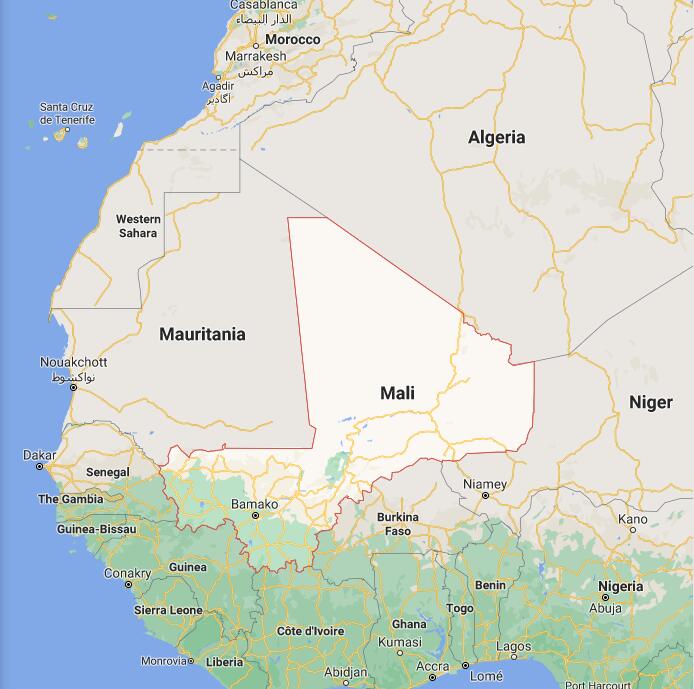
In 2003, Mali was a beautiful country located in West Africa. It had a population of around 13 million people, primarily speaking Bambara, French, and various African languages. According to computergees, the capital city was Bamako, which is home to the Presidential Palace and several other important government buildings and monuments. The economy relied heavily on its agricultural sector with cotton being the main export item. Tourism was also becoming increasingly popular due to its stunning landscapes, vibrant culture and ancient cities such as Timbuktu. In addition to its natural beauty, Mali had a rich cultural heritage with traditional music, cuisine and art that blended African influences with those from Europe and the Middle East. Despite its many challenges including poverty and political unrest in 2003, Mali remained a vibrant country that held great promise for its future generations.
Yearbook 2003
Mali. According to Countryaah.com, Mali Independence Day is September 22. Mali signed an agreement with Mauritania and Gambia during the year to utilize port facilities in these two countries. The reason was the great losses incurred by the Ivory Coast conflict Mali, whose foreign trade was previously largely done via the port city of Abidjan in Ivory Coast.
In September, Mali’s former president Alpha Oumar Konaré assumed the post of President of the African Commission, the newly formed African Union executive body set up by role model of the European Commission.
The medieval city of Timbuktu, one of Mali’s World Heritage sites according to the UN agency UNESCO, was badly damaged in a flood in September. At least 180 aged clay buildings were destroyed.
Following an armed clash in April 2004 between the army and an Islamic group belonging to the al-Qaeda network, President Touré asked the government to resign. Ousmane Issoufi Maiga replaced Ahmed Mohamed Ag Hamani in the post of Prime Minister. Hamani had been in the post since June 2002.
Grasshoppers razed the fields in November and lack of rain prevented the new crops from growing properly. Added to this was international inaction, and these conditions triggered a serious humanitarian crisis in the country, with uncertainty about the food situation and local markets emptied of food. The lives of millions of people were in danger. The grasshoppers had consumed cereals and vegetables. Only the underwater rice had been spared the insect’s hunger. First of all, it was the children who were affected, and in July 2005 many families could only eat once a day, and only leaves and fruits.
In March 2006, the World Bank, the IMF and the African Development Bank (ADB) decided to relinquish 13 African countries’ foreign debt – including Malis. It was implemented July 1.
In May 2007, President Touré was re-elected in the first round of elections with 72% of the vote. Among his election promises was the introduction of microcredits for small businesses. The opposition declared there had been scams, but independent observers described the election as fair. In April 2009, local elections were held, which, despite minor irregularities, were declared free.
al Qaeda in the Islamic Maghreb (AQIM) became increasingly active in northern Mali during 2010 and 2011. AQIM killed some members of the security forces. On the one hand, they abducted foreigners with demands for large sums in ransom. In September 2010, they abducted 7 relief workers demanding ransom and lifting the French ban on veil.
The upheavals in Libyain 2011, hundreds of thousands of Tuaregs fled. Most had worked as guest workers in the country and some had worked in Libya’s army. Tuaregans originating in Mali returned to their homeland, which was in stark contrast to the rich Libya. They were met by poverty, underdevelopment and unemployment. It created the seed for a fight for an independent Tuareg state in northern Mali under the name Azawad. In the first months of 2012, the Tuaregans MLNA Mali’s military pushed further back, and on March 21, the military conducted a coup against the incumbent President Touré. Allegedly in protest of the lack of resources for the war in the north of the country. Major Amadou Sanogo, as chairman of the CNRDR (National Committee for Reinstating Democracy and State), took power in the country. Mali was immediately suspended from the AU, and the coup merely accelerated MLNA’s progress in the northern part of the country. On April 1, the movement occupied the historic capital Timbuktu. The West African Common Market ECOWAS tried to intervene and set aside the coup makers, but had to give up the trial after widespread civilian support for the coup makers.
Mali thus became the first victim of the “Arab Spring”. The West’s war on Libya and the civil war sent over 1 million people on the run, sending large quantities of weapons circulating in the Sahara region.
Republic of Mali Brief Guide
According to AbbreviationFinder, Mali is a landlocked country in West Africa. Its neighbors are Algeria in the north, Niger in the east, Burkina Faso and Côte d’Ivoire in the south, Guinea in the southwest and Senegal and Mauritania in the west.
In colonial times, the area of present-day Mali was called French Sudan. Mali is named after the ancient kingdom of Mali. Mali is a member of the African Union and the eighth largest country in Africa and the 23rd largest in the world. The country became independent, like most other African colonies, in the 1960s (in 1960).
The whole of northern Mali is located in the Sahara Desert, and the central and southern parts are mainly formed by the Sahel Savannah. In the central and southern parts flows the longest river in West Africa and the third longest in all of Africa, Niger. More than 65% of the country is desert or semi-desert.